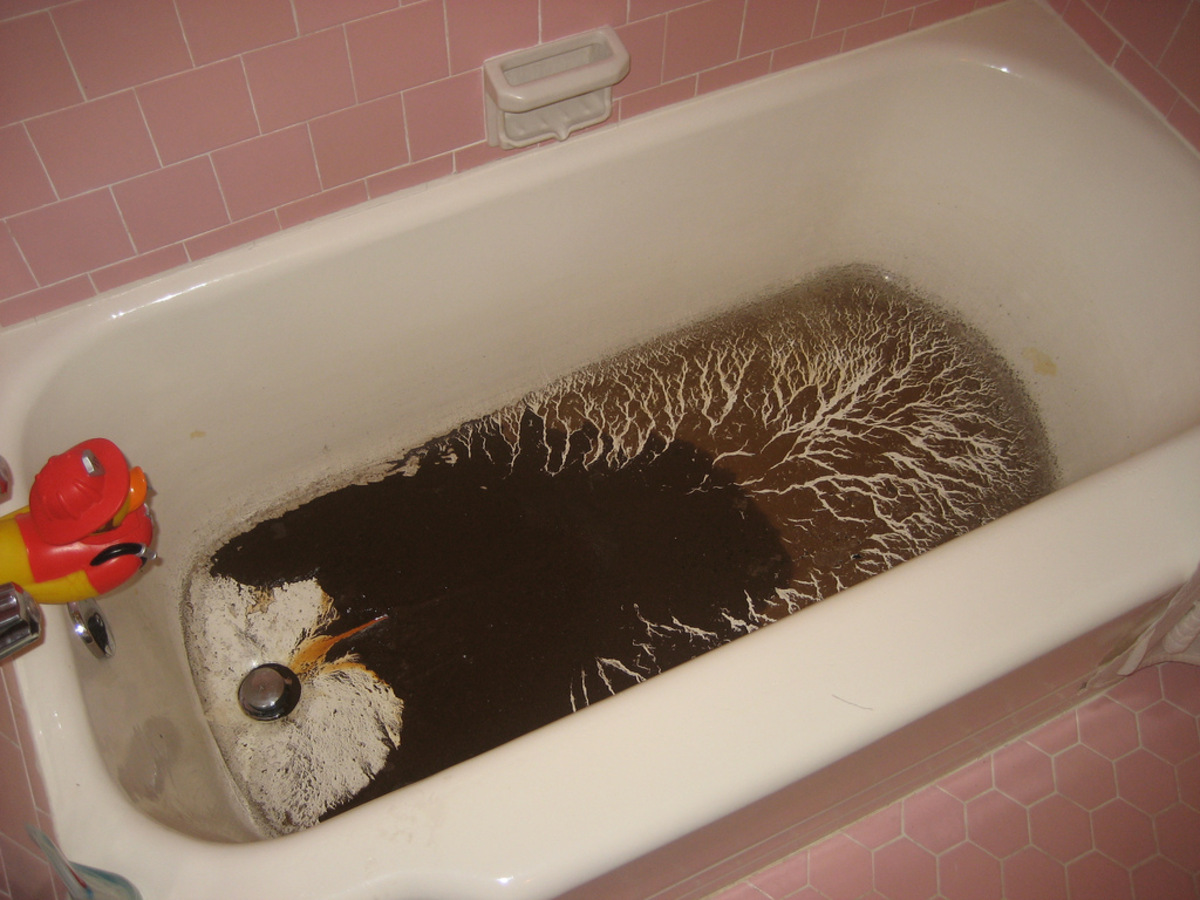Just about every person is bound to have their own piece of advice when it comes to Water Coming up Bathtub Drain.

Sewer back-up in the bath tub can be an upsetting and unsanitary problem for any home owner. Not only is it inconvenient, yet it additionally positions serious wellness risks and indicates underlying problems with the plumbing system. Recognizing why sewage is coming up through the bath tub is essential for taking appropriate activity to deal with the problem effectively.
Introduction to the Concern
Recognizing the Issue
When sewer starts backing up right into the bath tub, it's a clear indicator of an issue with the drain system. The wastewater that needs to be flowing away from your home is rather locating its back right into your space, which can result in significant damage and health hazards.
Possible Reasons
Numerous elements can contribute to sewer back-up in the bath tub. From obstructions in the sewer line to issues with the plumbing infrastructure, recognizing the source is necessary for finding an option.
Typical Reasons for Sewer Back-up
Blockages in the Drain Line
Among one of the most usual sources of sewer backup is an obstruction in the sewage system line. This can happen as a result of the build-up of debris, grease, or international things in the pipelines, protecting against proper circulation and creating sewage to support right into your bathtub.
Tree Origin Intrusion
Tree roots looking for wetness and nutrients can infiltrate drain lines through tiny cracks or joints. With time, these origins can expand and expand, triggering significant damage to the pipes and resulting in sewage backup problems.
Aging Facilities
Older homes may have obsoleted plumbing systems that are extra vulnerable to deterioration, splits, and wear and tear. As pipelines age, they become a lot more susceptible to leakages and obstructions, increasing the probability of sewer backup occurrences.
Heavy Rainfall or Flooding
Throughout durations of heavy rainfall or flooding, the sewer system might come to be overwhelmed with excess water, triggering backups and overflows. This can result in sewage supporting into bathtubs and other fixtures inside the home.
Health And Wellness Threats Associated with Sewer Back-up
Contamination of Supply Of Water
Sewage back-up can infect the water in your home, presenting a severe health risk to you and your household. Direct exposure to polluted water can lead to gastrointestinal concerns, skin infections, and other illnesses.
Spread of Condition
Sewer has hazardous microorganisms, infections, and parasites that can trigger a variety of illness, consisting of hepatitis, cholera, and gastroenteritis. Coming into contact with sewage or contaminated surfaces puts you in danger of infection.
Mold Development
Dampness from sewage backup can develop optimal conditions for mold growth in your house. Mold spores can exacerbate breathing troubles and create allergic reactions in sensitive people, making timely cleanup crucial.
Indications of Sewer Backup
Foul Odors
Undesirable smells emanating from drains pipes or fixtures, specifically in the washroom, may suggest sewer back-up problems. These smells are typically solid and persistent, indicating a trouble that calls for prompt focus.
Slow Draining Fixtures
Bathtubs, sinks, and toilets that drain pipes gradually or not whatsoever could be experiencing sewage back-up. If multiple components are influenced at the same time, it's likely that the concern originates from a common factor, such as the main drain line.
Gurgling Noises
Strange gurgling or gurgling noises coming from drains pipes when water is running in other places in your home are indicative of air caught in the plumbing system. This air build-up can result from sewer backup and ought to be examined immediately.
Immediate Actions to Take
Switching Off Water Supply
In the event of sewage back-up, it's necessary to turn off the water supply to prevent further contamination and damage. Find the major water shutoff valve in your house and shut it off up until the problem can be fixed.
Getting In Touch With a Specialist Plumber
Handling sewage backup is not a DIY job. Call a qualified plumber with experience in handling sewage-related issues to examine the circumstance and carry out necessary repair services or clean-ups.
Avoiding Contact with Polluted Water
Till the sewer backup is resolved, stay clear of contact with polluted water to avoid the spread of microorganisms and microorganisms. Use protective gear if you should be in the damaged location and clean your hands thoroughly later.
Preventive Measures
Regular Maintenance of Drain Lines
Arrange regular assessments and upkeep of your sewer lines to identify and deal with potential problems before they escalate right into significant troubles. This can include cleaning particles, examining for tree root intrusion, and fixing any type of damaged pipelines.
Setting Up Backwater Shutoffs
Take into consideration setting up backwater shutoffs in your plumbing system to prevent sewage from receding right into your home throughout durations of heavy rainfall or flooding. These valves automatically close when water draws back up, securing your home from contamination.
Correct Disposal of House Waste
Prevent purging anything other than toilet tissue and human waste down the toilet to prevent clogs and blockages in the drain line. Dispose of grease, oil, and various other house chemicals effectively to minimize the threat of plumbing troubles.
Cleaning Up After Sewer Back-up
Disinfection Procedures
Completely sanitize and disinfect impacted locations after sewage back-up to remove dangerous bacteria and prevent mold growth. Use proper cleaning products and safety gear to make sure safe and reliable clean-up.
Restoration of Influenced Locations
Fix any damages to flooring, wall surfaces, or fixtures brought on by sewer back-up. Depending on the extent of the damage, you might need to replace carpeting, drywall, or other materials to recover your home to its pre-loss problem.
Why Is Water Backing Up in My Bathtub When I Flush My Toilet?
What to do about a sewer line clog
First, don’t bother with plunging. No amount of plunging will dislodge the clog in a sewer line. The clog is too far away. Plungers are for clogs in the toilet itself, not the sewer line. Plus, the most likely causes of a sewer clog are:
- Tree roots
- Flushed toys or feminine products
- Grease buildup
Those items don’t move easily. And in the case of tree roots, the roots need to be cut out of the pipe and the pipe will need to be repaired.
You’ll need a closet auger. A closet auger is a type of plumber’s snake with a protective cover to keep from scratching the delicate porcelain toilet. If the clog is further down, you may need to remove the toilet or use one of your cleanouts to get to the clog.
We also recommend doing a video inspection of the drain to ensure that the cause of the clog has been completely removed. Otherwise, you could have the same problem again in a few days or weeks.
https://mspplumbingheatingair.com/blog/why-is-water-backing-up-in-my-bathtub-when-i-flush-my-toilet

Hopefully you enjoyed reading our part about Why sewage is coming up through your bathtub. Thanks for finding the time to read through our content. If you please set aside a second to distribute this content if you liked it. We enjoy reading our article about Why is Sewage Backing Up Into My Bathtub?.
Learn More
Comments on “Examining the Causes of Effluent Backflow in the Bathtub”